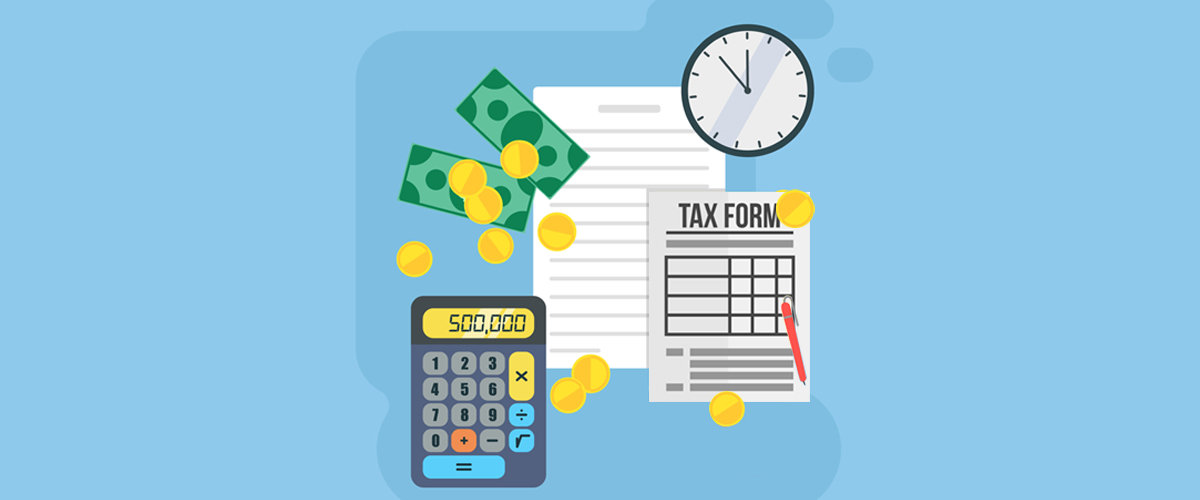-
Personal Loans
- Business Loan
- Gold Loan
-
Credit Cards
- Credit Report
- Login
Products
Personal Loans Business Loan Gold Loan Credit CardsResources
EMI Calculator IFSC Code Blogs FAQs

Products
Personal Loans Business Loan Gold Loan Credit CardsResources
EMI Calculator IFSC Code Blogs FAQsBlogs > Tax Benefits On Personal Loan Explained

We all know that a personal loan acts as a multi-purpose loan without needing any form of collateral. However, did you know that there are tax benefits on personal loan as well?
You can claim tax benefits on personal loan if the loan amount is used in the right way. According to the Indian Income Tax Act, there are no sections pertained to the tax benefits on a personal loan. However, if a personal loan is used for a purpose wherein tax benefit is allowed, then you can claim for tax benefits on a personal loan.
As per the income tax slabs, every individual earning more than ₹2.5 lakhs is liable to pay a certain amount. So, the tax calculated on the amount above ₹2.5 lakhs will depend on the tax slab. Moreover, these slabs are incremental slabs, which means they will be calculated from the top slabs. Before further discussing, let’s have a look at the tax slabs of FY 2017-2018.
|
|||||||||||||||
Under Section 80C, an individual can claim deduction up to ₹1,50,000. In fact, a personal loan can be one of your ways to save tax by investing the money in any tax saving instrument. However, it is important to know that the money invested should not be paid back with more interest.
In here, we try to explain as to how a personal loan can help you save taxes with an example.
Suppose, let’s say X is earning ₹5 lakhs pa. As per the above table, the tax calculated will be as follows:
Slab 2 (₹5 lakhs – ₹2.5 lakhs= ₹2.5 lakh) – (2,50,000 * 5%) (+) ₹12,500
Slab 1 ( Exemption up to ₹2.5 lakhs) – (+) ₹0
Total Tax Amount ₹12,500
So, the taxable amount in the above example comes to be ₹12,500. One way to reduce taxes is by reducing the taxable income altogether. In fact, by taking a personal loan and investing the amount in instruments that are under Section 80C, you will be able to find the answer to how to save on taxes.
To save taxes, let’s say X takes a personal loan of ₹1,50,000 at an interest rate of 11% for a period of 6 months. The total interest payable is ₹4,849 and EMI comes down to ₹25,808. Then, the taxes calculated would be:
Slab 2 (₹5 lakhs – ₹2.5 lakhs – ₹1.5 lakhs = ₹1 lakh) – (1,00,000 * 5%) ₹5000
Slab 1 ( Exemption up to ₹2.5 lakhs) – (+) ₹0
Total Tax Amount ₹5000
In here, the taxable amount in the above example comes to be ₹5000. This way you will make the taxable income as low as ₹1,00,000. In fact, this is how a personal loan can help you save ₹7500.
However, it is important to know that saving on taxes by taking a personal loan is ideal only in certain conditions.
Always remember, if the total interest payable you make is less than ₹7500, then taking a personal loan is ideal. However, if the total interest payable is more than ₹7500, then you will end up spending more.
For example, in the above case, the cost of taking the loan exceeds your tax savings.
However, let’s just assume if his salary was ₹10 lakhs, his taxable income post Section 80C deduction will be ₹6,00,000 {10,00,000-(2,50,000-1,50,000)}.
Then, the tax calculated will be:
Slab 2 (₹10 lakhs- ₹ 5 lakhs= ₹5 lakhs) – (5,00,000 * 20%) (+) ₹1,00,000
Slab 1 (₹ 5 lakhs- ₹2.5 lakhs- ₹1.5 lakhs= ₹ 1 lakh) – (1,00,000 * 5%) (+) ₹5000
Total taxable income ₹105000
Therefore, a personal loan can be a tax saving instrument only for individuals with a good income.